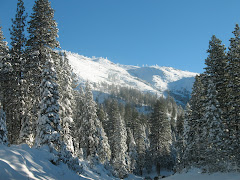Perhaps you are wondering what happens when you schedule an Equine Dentistry appointment. Today I'll share a few pictures of various patients, my assistant Jerry and myself to illustrate a typical dental visit.

I start with an examination of every patient to evaluate their basic health. After listening to the heart and lungs, taking her temperature and assessing her over all well-being, I then focus on Millie's head, jaw and teeth. The next step is sedation, which is done with an intravenous injection.

Little mini, Dutchess, who is sedated, does not mind as I evaluate her incisors.

Cheyenne, an older gelding, has some nice moist pink gums, but shows uneven wear and growth of his incisor teeth.

To hold the horse's mouth open in order to further examine or work on the incisor teeth, a plastic "tube" is placed in the interdental space, that toothless area between the incisors and molars.

Once the incisors have been finished, it's time to move on to the molars. In the awake horse you can see and feel the first premolar, the molar that lies behind the bit. To see, feel and evaluate your horse's full mouth, tongue, cheeks and all of the molars and premolars, the mouth must be held open with a dental speculum. There are several different types of full mouth speculums. In the photo above, Jerry is applying a "McPherson Mouth Speculum" to Pistol.

This mare is sedated, her mouth is being held open, has been fully examined and she is ready for her 'float'. A 'head stand' is being used to help support her head. Basically, horse teeth commonly develop sharp enamel points/hooks which need regular (yearly) smoothing with a "FLOAT".

Several of the instruments that may be used during a horse dental. I will discuss different dental problems, how they are corrected and the uses of various instruments in future posts.

I utilize both hand and power instruments.

Bella is finished. One last look before letting her head down and removing the speculum.

Meet Fonz, his dental work is finished, his mouth is rinsed out and he will be very relaxed for a little longer as his sedation wears off. You'll get to see Fonz again, as I plan to feature him in a later post.
 I start with an examination of every patient to evaluate their basic health. After listening to the heart and lungs, taking her temperature and assessing her over all well-being, I then focus on Millie's head, jaw and teeth. The next step is sedation, which is done with an intravenous injection.
I start with an examination of every patient to evaluate their basic health. After listening to the heart and lungs, taking her temperature and assessing her over all well-being, I then focus on Millie's head, jaw and teeth. The next step is sedation, which is done with an intravenous injection.  Little mini, Dutchess, who is sedated, does not mind as I evaluate her incisors.
Little mini, Dutchess, who is sedated, does not mind as I evaluate her incisors. Cheyenne, an older gelding, has some nice moist pink gums, but shows uneven wear and growth of his incisor teeth.
Cheyenne, an older gelding, has some nice moist pink gums, but shows uneven wear and growth of his incisor teeth.  To hold the horse's mouth open in order to further examine or work on the incisor teeth, a plastic "tube" is placed in the interdental space, that toothless area between the incisors and molars.
To hold the horse's mouth open in order to further examine or work on the incisor teeth, a plastic "tube" is placed in the interdental space, that toothless area between the incisors and molars. Once the incisors have been finished, it's time to move on to the molars. In the awake horse you can see and feel the first premolar, the molar that lies behind the bit. To see, feel and evaluate your horse's full mouth, tongue, cheeks and all of the molars and premolars, the mouth must be held open with a dental speculum. There are several different types of full mouth speculums. In the photo above, Jerry is applying a "McPherson Mouth Speculum" to Pistol.
Once the incisors have been finished, it's time to move on to the molars. In the awake horse you can see and feel the first premolar, the molar that lies behind the bit. To see, feel and evaluate your horse's full mouth, tongue, cheeks and all of the molars and premolars, the mouth must be held open with a dental speculum. There are several different types of full mouth speculums. In the photo above, Jerry is applying a "McPherson Mouth Speculum" to Pistol.  This mare is sedated, her mouth is being held open, has been fully examined and she is ready for her 'float'. A 'head stand' is being used to help support her head. Basically, horse teeth commonly develop sharp enamel points/hooks which need regular (yearly) smoothing with a "FLOAT".
This mare is sedated, her mouth is being held open, has been fully examined and she is ready for her 'float'. A 'head stand' is being used to help support her head. Basically, horse teeth commonly develop sharp enamel points/hooks which need regular (yearly) smoothing with a "FLOAT".  Several of the instruments that may be used during a horse dental. I will discuss different dental problems, how they are corrected and the uses of various instruments in future posts.
Several of the instruments that may be used during a horse dental. I will discuss different dental problems, how they are corrected and the uses of various instruments in future posts. I utilize both hand and power instruments.
I utilize both hand and power instruments.  Bella is finished. One last look before letting her head down and removing the speculum.
Bella is finished. One last look before letting her head down and removing the speculum.

No comments:
Post a Comment